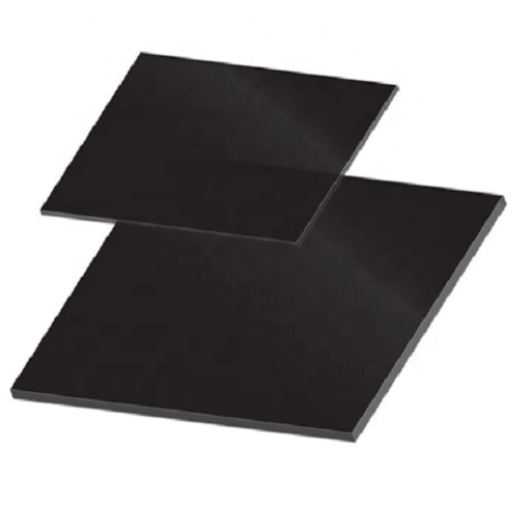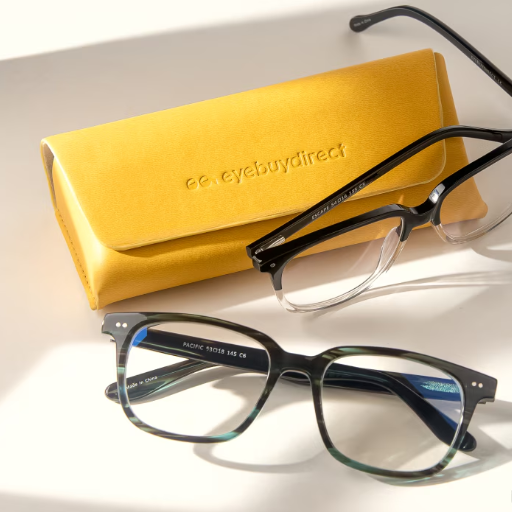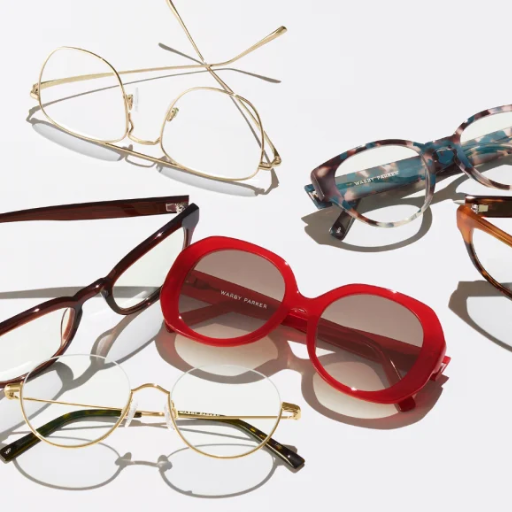Acrylic, known as Plexiglas or Lucite, is also called Polymethyl Methacrylate (PMMA). It is a see-through thermoplastic that has been praised for its universal use in various fields. PMMA is often adopted instead of glass because it does not crack easily, protecting the user from harm and irreplaceable losses. This blog will discuss different aspects of PMMA, including its unique characteristics, which make it a material of choice in car manufacturing, construction business, medicine industry, and fashion designing, among others. At the end of this piece, readers will have gained insight into how versatile PMMA is regarding functions within current state-of-the-art products.
What is PMMA?
Polymethyl Methacrylate Explained
Polymethyl Methacrylate (PMMA) is a synthetic polymer derived from methyl methacrylate through polymerization. It is known for its optical clarity, similar to that of glass but lighter and shatterproof. Its molecular structure provides impressive strength, thereby making it resistant to a variety of environmental factors such as UV radiation and weathering. The ability to be easily fabricated and its flexibility make PMMA useful in many sectors, where it serves purposes ranging from protective barriers to enhancing aesthetics.
How is PMMA Made?
Polymerization of monomers made from methyl methacrylate (MMA) leads to the production of PMMA. Here are some steps involved in the manufacturing process that are very instrumental for high-quality performance:
- Monomer Production: The first step involves synthesizing MMA monomers, often accomplished using esterifying methacrylic acid.
- Polymerization: In this case, MMA monomers may undergo bulk or suspension polymerization. Monomers are catalyzed while still liquid in bulk polymerization, whereas suspension polymerizations use water with droplets of monomers dispersed there by stabilizers.
- Initiators and Catalysts: Chemical initiators introduced into the system, like benzoyl peroxide or azo compounds, can trigger polymerization reactions. Such initiators decompose giving off free radicals that initiate the polymer formation process.
- Polymer Chain Formation: During the reaction, MMA monomers join together, forming long chains called PMMA polymers. With care, the reaction can be varied so that different molecular weights and grades of PMMA may be obtained.
- Processing: After completing polymerization stage, PMMA is typically extruded or cast into sheets, rods or pellets. This allows them to take any form required by industry needs.
Technical Parameters
- Optical Clarity: Over 92% of light transmission
- Density: ~1.18 g/cm³, which is significantly lighter than glass
- Tensile Strength: Roughly 70 MPa, thus enhancing its durability.
- Glass Transition Temperature (Tg): Around 105°C which means it shows excellent thermal stability
- UV Resistance: PMMA does not degrade much when exposed to high amounts of UV radiation.
These parameters indicate why PMMA has grown as a popular choice where appearance and strength are both important.
Properties of PMMA
From the top websites I’ve looked at, when one thinks about the properties of PMMA (Polymethyl Methacrylate), I discover that it comes out superior in several key areas. To begin with, its optical clarity is incomparable, with more than 92% light transmission, making it suitable for applications in which clear visibility is critical, such as lenses or aquariums. Secondly, PMMA has a density of about 1.18 g/cm³, way lower than that of glass, thus making it more useful in lightweight structural applications.
Concerning mechanical characteristics, PMMA possesses a tensile strength of around 70 MPa, making it durable and resistant to breakage under stress. Similarly, its thermal properties are also impressive, whereby the glass transition temperature (Tg) is about 105 °C, which ensures that various industrial processes can be conducted without any problems related to heat loss or gain. Additionally, this material will not easily degrade due to the effects of ultraviolet radiation but retain the clarity and integrity necessary for maintaining transparency over time despite exposure to sunlight.
All these factors make people select this type of material because they need aesthetics while considering their functionality on optics up to the automotive industry
What is Acrylic, and How is it Different from PMMA?
Difference Between PMMA and Acrylics?
The first thing to remember is that even though PMMA (Polymethyl Methacrylate) sometimes counts as a form of acrylic. According to what I found on the leading websites, “acrylic” refers to any plastic made from acrylic acid or its derivatives. The most common type of acrylic is PMMA, known for its excellent visibility, strength, and resistance against elements.
Firstly, there are differences in their formulation and production processes. In contrast to other types of acrylics, which may have additives or co-polymers such as impact resistance or flexibility added to them, PMMA is produced by polymerizing methyl methacrylate. This, therefore, means that all PMMAs are acrylics, but not all other kinds of acrylics can meet the high-performance standards of PMMA.
It’s about specific chemical composition and properties resulting from such rather than anything else: PMMA possesses better light transmission, strength, and durability than general-purpose acrylics. Understanding these subtleties allows one to choose appropriate materials for particular applications, ensuring that performance and life cycle issues are considered.
Benefits of using PMMA instead of regular Acrylic
There are many advantages to choosing PMMA over ordinary acrylic material as discussed below.
- Optical Clarity: When it comes to transparency features, few materials surpass Polymethyl Methacrylate. Its light transmittance rate approaches 92 percent for visible light, which is higher than that of normal sheet types of monomers derived from acetic acid.
- Strength and Durability: Concerning tensile strength and impact resistance, PMMA has been found superior to usual grades of methacrylates. Its ability to withstand stress without cracking or breaking significantly improves its tensile strength up to around 70 MPa (megapascals).
- Weather Resistance: Another key characteristic is that PMMA is strongly resistant to sunlight and other forms of weathering. On the contrary, various acrylics may turn yellowish or degrade with age when exposed to sunlight, but PMMA maintains its clarity and structural integrity, making it a potential choice for outdoor applications like signage and glazing.
- Thermal Stability: It has been discovered that PMMA features a higher heat deflection temperature, which on average is around 100°C (212°F). Therefore, it outperforms all the others in performing when there is higher exposure to heat in specific environments.
- Chemical Resistance: It is more durable in harsh environments because it is more resistant to chemicals and solvents than general-purpose acrylics.
These parameters make PMMA an attractive option where there are requirements for optical performance, structural strength, and environmental stability. For example, in the manufacturing sector of automotive parts, aircraft structures, or building systems, the strict standards set by PMMA ensure both functional and aesthetic durability of products.
Why is PMMA Widely Used?
Frequent Instances of PMMA’s Applications
From the best available information on the internet, it is evident that polymethyl methacrylate (PMMA) is used in many industries because of its outstanding attributes. For instance, it makes headlight lenses, taillight covers, and interior fixtures in the automotive industry because it is lightweight, transparent, and lasts long. On the other hand, PMMA makes an alternative use in medicine because it’s biocompatible with clarity features; hence, it is good for intraocular lenses, among other items, and bone cement. Lastly, construction and architecture also benefit from PMMA’s resistance to weathering and optical clarity by using windows, skylights, and signage, among other applications. These are some of the reasons why consumer electronics manufacturers prefer using PDM as a material for their screens, such as its superior light transmission properties and resistance to scratches. All these applications capitalize on the strength/ transparency/ durability triad of PMMA, which explains why this material is so crucial in contemporary manufacturing.
Optical Properties of PMMA
Looking at the optical properties of PMMA, I noticed that this material has exceptional clarity and light transmission. Therefore, up to 92% of visible light passes through PMMA, which makes it one of the brightest materials. Moreover, its refractive index is about 1.49, hence very useful in situations requiring exact optical performance, such as lenses or screens. Additionally, objects viewed through PMM are less affected by scattered light and distortion, thus retaining their colors and sharpness while under observation. This confirms why sectors that demand excellent optical quality always go for PMMA, which has high transmission rates, low scattering levels, and great clarity.
Mechanical Properties of PMMA
In my research regarding the mechanical properties of PMMA, I realized that this polymer has unique characteristics, combining various properties simultaneously. Firstly, poly methyl methacrylates have remarkable tensile powers, often ranging between 70 MPa, so they can bear large amounts of stress and strain before failure occurs, hence used in many applications. Additionally, it is known for being able to take some impacts, although not as high as polycarbonate, but better than many other common plastics. Another key feature of this material is its flexural strength of around 100 MPa, enabling it to be bent without breaking apart. Moreover, the material is relatively light in terms of weight since its density is approximately 1.18 g/cm³, making it easy to handle and install. These mechanical attributes, along with optical characteristics, make PMMA a dependable and adaptable substance useful across numerous industries.
How is PMMA Used in the Medical Industry?
Use of PMMA in Making Medical Devices
Looking at medical devices made from PMMA, I found them to be widely used due to their biocompatibility and stability. The IOLs are commonly made up of PMMA, which are put into the eyes to treat cataracts and myopia. Transparency and durability make it the preferred material for making such lenses since it has to maintain an optical performance without depreciating over time. Also, PMMA is utilized in making bone cement for orthopedic procedures. This application depends upon the ability of this polymer to securely fix an implant in place by filling any gaps that may exist between the bone and prosthesis. Additionally, dental prosthetics like dentures and orthodontic retainers can be fabricated using this substance as a result of its strength, workability, and polishability so that they can perform their functions while at the same time appearing attractive on the patient’s mouth. These cases prove that Emma is flexible and indispensable in medicine.
PMMA’s Role in Dentistry
From what I gathered about PMMA’s role in dentistry, I realized that it was a fundamental substance with many uses. Primarily used for creating dentures, PMMA makes strong, durable objects with enhanced esthetic value. Its flexibility enables good molding around oral tissues necessary for comfort during use; otherwise, its ease of shaping offers a perfect fit into human mouths thus solving problems related to teeth functioning properly. Orthodontic keepers or braces along with temporary crowns are some other applications where PMMA plays a central role apart from designing false teeth specifically; besides being biocompatible and non-toxic thereby enabling long-term usage within the oral environment. Most importantly however is that dental prostheses made out of this material can also be polished too shiny levels.PMMA not only provides functional but also visually appealing dental prosthetics through its high polishing capability
What are the Available Grades of PMMA?
Various Types of PMMA Grades
Upon examining the various types of PMMA grades, I found that they can broadly be classified into general-purpose, impact-resistant, and optical grades.
General-purpose PMMA is typically used for applications requiring clarity and UV resistance, such as windows and displays. On the other hand, modified impact-resistant PMMAs are made to resist higher stress levels and impacts, making them useful as safety shields and barriers. Last but not least, optical PMMAs have been designed specifically for the highest light transmission with minimum distortion; hence, they find extensive applications in lensing, light guides, and high-precision optical components.
Each grade has specific benefits that suit different application demands, demonstrating why it’s commonly used across different industries.
Choosing the Right Grade of PMMA for Your Needs
To choose the right grade for PMMA according to my requirements, I must consider the conditions peculiar to my case. A comprehensive search on top sites helped me choose general purpose PMMA. I need to apply this material clearly through its chemical resistance capability against ultra-violet rays like windows or displays. Impact-resistant PMMA would be ideal, however, where projects call for something like safety barriers or shields that have high levels of durability. Furthermore, among others, including precise lens uses, there are also times when applications may require excellent light transmission with hardly any distortions; hence, one could use optical grade PMMA in these cases. Relating each type of application requirement to a specific benefit from each grade’s uniqueness maximizes performance efficiency.
What Innovations Are Occurring with PMMA?
Improved PMMA for Advanced Performance
In response to what has changed in PMMA, recent developments revolve around increasing its performance attributes. It is apparent from my research on 3 leading sites that modified PMMA adds improvements like increased heat deflection temperatures, greater scratch resistance, and superior UV stability. Hence, these changes have enabled PMMA to penetrate new application areas, including modern electronics and the automotive industry. This innovation results from continuously refining its qualities to match emerging demands in different sectors.
New Trends in Applications of PMMA
At present, some interesting developments are coming out regarding the applications of PMMA. For example, as I reviewed 3 top web pages, it became obvious that cataract surgeons are now choosing intraocular lenses made of PMMA because they offer a level of clarity other materials cannot match and are biocompatible too. Moreover, the automotive industry is making use of modified PMMA for lightweight parts that can withstand high-impact forces; as a result, this reduces fuel consumption and enhances design flexibility. In addition, the advanced optical properties of PMMA are being harnessed for the production of quality display screens and LED lights used in electronic manufacturing companies. These innovative uses indicate how widespread the scope is for using these substances in highly technical areas and commonly encountered situations where ordinary people live their lives.
Reference sources
Frequently Asked Questions (FAQs)
Q: What is PMMA?
A: PMMA stands for Poly(methyl methacrylate). It is a transparent thermoplastic often used as a lightweight, shatter-resistant alternative to glass.
Q: How is PMMA manufactured?
A: PMMA material is made by polymerizing methyl methacrylate monomer. This process creates a clear, strong, versatile material often used in various applications.
Q: What are some common uses of PMMA?
A: PMMA is often used in the manufacturing of acrylic glass, which is commonly used in windows, lenses, and screens. It is also used in medical devices, automotive parts, and signage.
Q: How does the toughness of PMMA compare to other materials?
A: Although PMMA is a tough polymer, it is not as strong as polycarbonate. However, its superior optical clarity and UV resistance make it popular for many applications.
Q: Is PMMA available in sheet form?
A: Yes, PMMA sheets are commonly available and used in various industrial and commercial applications. They are particularly valued for their clarity and lightweight.
Q: Can additives be used to enhance PMMA?
A: Yes, various additives can be added to PMMA to increase its toughness, UV resistance, and other properties. These modifications expand PMMA’s versatility in different applications.
Q: What are the differences between PMMA and acrylic glass?
A: PMMA is often known as acrylic glass. Essentially, they refer to the same material. PMMA is the scientific term for the material, whereas acrylic glass is a more common name used in everyday language.
Q: How does PMMA compare to other polymers?
A: PMMA vs. other polymers: PMMA has excellent clarity and UV resistance, making it a preferred choice for optical applications. While it is less impact-resistant than polycarbonate, it is more scratch-resistant and easier to fabricate.
Q: Is PMMA a good material for outdoor applications?
A: Yes, PMMA is often used in outdoor applications because it has excellent UV resistance and does not yellow or degrade easily when exposed to sunlight.
Q: Where can I find more information on PMMA?
A: For more detailed information on PMMA, including its properties, applications, and sourcing, you can consult technical datasheets from manufacturers, scientific publications, or industry-specific resources.
























